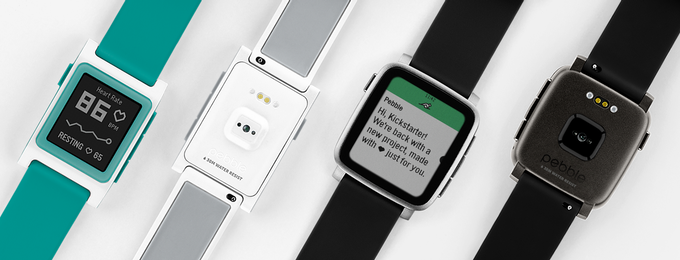Pebble, the company that began as the dream of founder Eric Migicovsky with a $10.3 million Kickstarter campaign in 2012 is no more and with it are concerns about the continued viability of the wearable market as a whole. Pebble’s assets, such as they are, are being acquired by rival wearable vendor Fitbit in a transaction that was completed on December 6.
While wearables arguably existed before Pebble’s successful 2012 Kickstarter, I for one will argue that it was Pebble, more-so than any other company before it, that helped to ignite the modern wearable computing market.
Pebble was the first smartwatch of the modern era, providing its community of users with a way to get notifications from either an Android or IOS phone on an e-ink display.
RIP Pebble
Sure the initial Pebble (since re-named as Pebble Classic), wasn’t a color display and appeared to some to be more of a child’s toy, but it was the start of something. The Pebble phenomenon was also something that Google and Apple responded to with their own wearable platforms.
The first Pebble Kickstarter in 2012 was followed up with a second massively successful Kickstarter campaign in 2015 which raised $20.3 million.
With the second Kickstarter, Pebble introduced the Pebble Time, which provides users with a color display and a microphone that works with multiple applications. The Pebble Time is also the watch that I wear today, becoming an integral part of my workflow and my life, since the first minute I put it on my wrist.
By 2015, Google’s Android Wear and the Apple Watch were already in the market, providing robust competition for the scrappy Kickstarter fueled startup that was Pebble. In my own analysis, I personally chose the Pebble Time because of multiple factors that make it superior to its rivals, even today.
Wearable struggles
While Apple Watch and Android Wear wearables struggle to give users more than a day of batter power, a Pebble Classic can deliver up to 7 days of power, while my trusty Pebble Time (even with my heavy-usage) will routinely provide me with 5 days of power.
The Pebble is also fully water resistance to 50 meters and it was also really affordable. Pebble also made it very easy to get started with developing watch faces and apps for the watch, with a cloud developer environment called, CloudPebble.
On May 24 of this year, Pebble announced its third Kickstarter campaign, with the promise of a new Pebble Time 2 and the new Pebble Core device.
The campaign raised $12.8 million from nearly 67,000 backers. I personally was planning on getting a couple of Pebble Time 2 watches from my local BestBuy, which was set to get the new devices after Kickstarter backers got their watches in November.
Being a strong believer in Pebble and its watches, I wanted to share the devices with family as holiday gifts.
The Pebble Time 2 is however a gift I’ll never be able to give, because it’s never going to be made.
Read more on page 2…
Originally published on eWeek





